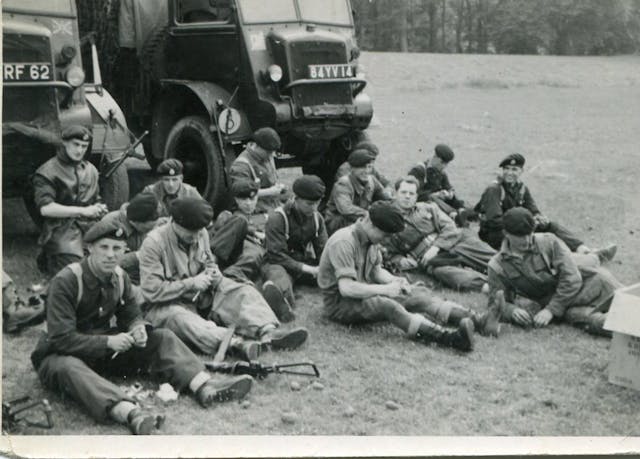
How much were soldiers in World War 2 paid? It depended on the country, but the average US soldier got $50 a month, the average British soldier got two shillings and 6 pence a day, and the average German soldier was paid 35 Reichsmark a month.
During World War 2, all of the participating countries had conscription because they didn’t have enough people in their standing armies to fight the war. The death toll and the injury rate was too high. The people they were conscripting were leaving their jobs and their lives behind, but they still had responsibilities, and they still needed to earn. That meant they had to be paid. An enormous percentage of the cost of World War 2 went on salaries for soldiers. World War 2 was the most expensive war that we have ever had on this planet, so far at least. It cost $4 trillion in today’s money. About 50% of all that money was spent by the USA and Germany.
So, how much were soldiers paid. A private for the United States was paid $50 a month. That increased with time served, and it also increased with promotion. A captain got $200 a month, a brigadier general $500 a month and General of the Army (which is like a fleet admiral in the navy or a field marshal in European countries) received $1,125 a month. Today (May 2025), $50 is $984 and $1,125 is $22,140. These days, the salary of a private has risen, but generals still get paid about the same amount. How did $50 compare to the average salary. The base salary wasn’t that high, but they did get tax deductions and they received all of their food and other luxuries from the army. The army used that to say that the average soldier in World War 2 was paid $3,600 a year, which was higher than 80% of the civilian population. I’m not sure how accurate this is. Plus, the civilian population didn’t have to worry about being shot. Soldiers got pay increases for every year of service and they also got salary increases of $2 a month if they received medals.
Soldiers in the UK were paid two shillings and 6 pence a day. That is a little more difficult to work out because the money used in the UK has changed since then. According to an inflation calculator, that is the equivalent of £4.92 these days, which wouldn’t buy you a lot. This was about a quarter of the salary of a US soldier. This often led to resentment among the troops. The American soldiers had access to better equipment and were also paid a lot more as well. Just like in the US, salaries went up with promotion, any medals won, and length of service, but it was never as high as the salary in the states. The pay for a British soldier was also lower than every one of the Commonwealth countries that were fighting on behalf of Britain. British soldiers got less than three shillings, South African soldiers 3.5, Australian 5.5, Canadian and New Zealand soldiers got 6, and then Americans at the top.
German soldiers were paid 35 Reichsmarks a month, which works out to be slightly higher than a British soldier was paid, but not by a lot. Unlike the British and American soldiers, the money available for the salaries of the German soldiers ran out as Germany began to lose the war.
In most armies, if a soldier with a family was killed, benefits would be paid to the family. Also, soldiers in the US army and the British army were able to sign up for a life insurance program when they enlisted. If the soldier died, the life insurance would pay out to their family. If they didn’t die, they could continue the life insurance at a reduced cost. A lot of the life insurances started paying out dividends and it was a small source of income for some veterans once they retired.
All of the soldiers were paid in cash. Each army would have cashiers who would take money to all of the places the army were located in. The soldiers would queue up and would be paid in cash. They would receive their pay in the local currency. Soldiers who had family at home could arrange for part of their pay to paid out back home to their family. If soldiers were away in combat, they would receive several weeks or months’ worth of pay at once. And then they would probably go into a local town, if one was available, and spend as much of it as they could. And this is what I learned today.
Sources
https://www.reddit.com/r/AskHistorians/comments/4j8zos/pay_of_american_gis_during_world_war_ii/]
https://militaryhorse.org/forum/viewtopic.php?t=9760
https://www.nationalarchives.gov.uk/currency-converter/#currency-result
https://www.royalmint.com/stories/collect/war-and-wages
https://www.bbc.co.uk/history/ww2peopleswar/stories/71/a1108171.shtml
https://soc.history.war.world-war-ii.narkive.com/6OC9p1DC/insurance-during-wwii
https://legionmagazine.com/life-insurance-for-second-world-war-veterans
https://www.benefits.va.gov/insurance/nsli.asp
Photo by Mark: https://www.pexels.com/photo/british-army-soldiers-resting-by-trucks-15677850/
